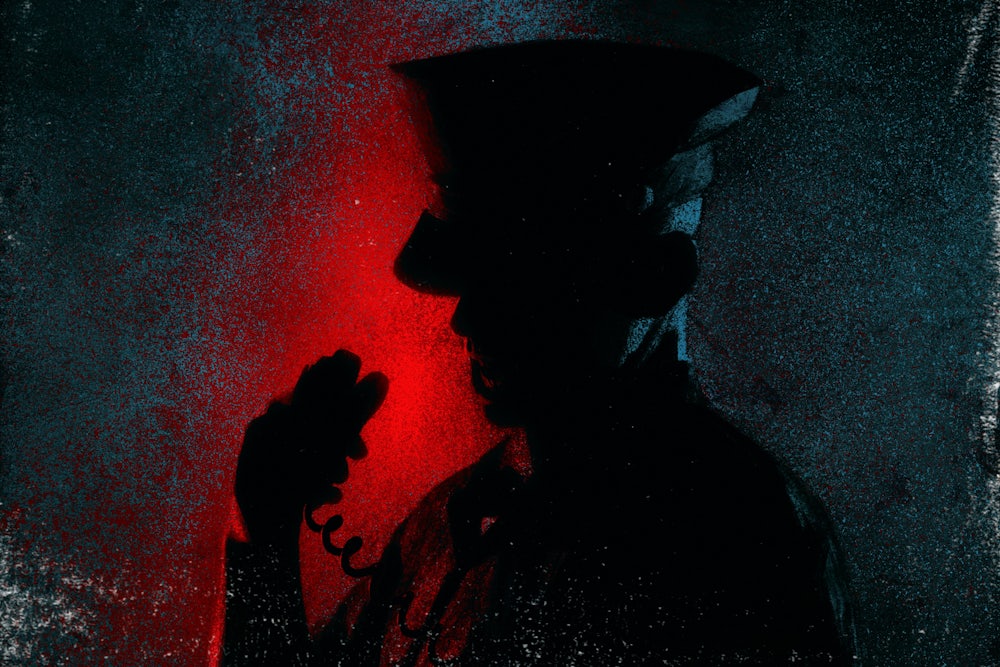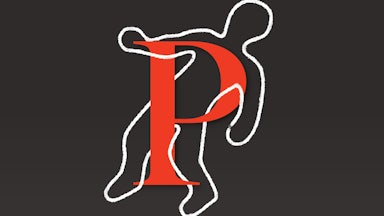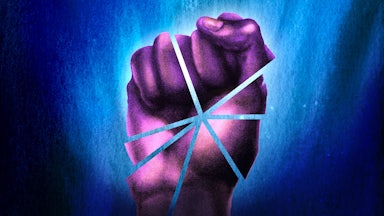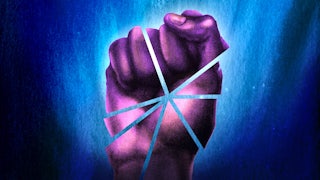“Man Dies After Medical Incident During Police Interaction” was the title of the initial statement the Minneapolis Police Department released after Officer Derek Chauvin killed George Floyd a year ago. It explained: “He was ordered to step from his car. After he got out, he physically resisted officers. Officers were able to get the suspect into handcuffs and noted he appeared to be suffering medical distress.”
The narrative was untrue in both broad outlines and specific details, muddying cause and effect, subject and object. We know because of cell phone video recorded by Darnella Frazier, then 17 years old, that revealed what really happened.
“At no time were weapons of any type used by anyone involved in this incident,” the statement read. Frazier’s video showed how Chauvin killed Floyd. He weaponized his body by kneeling on Floyd’s neck for over eight minutes, ignoring Floyd’s pleas for air, causing the “medical distress,” committing murder.
In statements like this one, police stretch, manipulate, and abuse plain language. Across the United States, in the most heavily policed neighborhoods, and as recorded on protest placards or in innumerable rap, reggae, and punk lyrics, it’s widely understood, if not accepted, that cops lie.
Reading police literature gives you a diametrically opposed account. You learn that police are locally accountable, domestically oriented, civilian peacekeepers. They are politically nonpartisan and neutral enforcers of the law, guided by policy, science, and rank discipline. John Elder, the director of public information for the Minneapolis Police Department and author of the Floyd statement, called its falsehoods a consequence of a “fluid” situation. A cop would never lie. “We try very hard to get information out as quickly as possible that is wholly honest and correct,” he told the Star Tribune. “There is no way I’m going to lie about a situation that is on body camera and is going to prove this department to be disingenuous.” The message is that police prevent violence, investigate and solve crime mysteries, and answer to a mass public demanding that they accomplish these tasks with alacrity.
You could call these the sustaining myths of policing, but I think of them as political arguments police make. They are instrumental, a means toward an end. Police attempt to achieve legitimacy through the stories they tell about themselves. Police legitimacy means public compliance. It means power.
It’s thus not simply that cops mislead in their statements to the press after an “officer-involved shooting.” The lie that police tell is not only rendered in deceptive language. It’s not about the words they choose. The lie is baked into the institution. The core of policing is not safety. It is social control. All the other lies obfuscate this function.
Cops lie about how hated they are. Even amid the rebellions of 2020, police remained surprisingly popular. Although the percentage ticked down a bit from four years earlier, the Pew Research Center found last July that over half of Americans viewed police favorably. You wouldn’t know this if you listen to the rants of police union leaders, however. Or if you shop online for Blue Lives Matter gear. Or if you swipe right when a man in blue appears on your dating app. Last summer, as police assaulted protesters—shoving a 75-year-old man to the ground, blinding a journalist with a foam bullet, tear-gassing a toddler—they produced a counternarrative of growing danger: Their milkshakes were being poisoned; it was no longer safe to order at the drive-thru. The threat was everywhere. Claiming to be hated for ensuring public safety reinforces the idea that critics are malcontents or sociopaths.
In the same report on policing, Pew found more significant decreases in the percentages of Americans who believed cops use the right amount of force, treat different racial groups equally, and hold themselves accountable. Although these decreases occurred across the populace, broken down by race, the numbers did diverge starkly. Black Americans overwhelmingly disagreed that police do a good job protecting people from crime, with only 28 percent agreeing. Worse, only 9 percent of Black people agreed that cops do a good job of treating different racial groups equally, with 90 percent believing cops do a poor or fair job of it. In contrast, 42 percent of white Americans felt cops do a good or excellent job of treating different racial groups equally. And 67 percent of white Americans believed cops do a good or excellent job at protecting people from crime.
Perhaps cops claim to be more unloved than they are because they study findings like Pew’s, which also showed that young people favor cutting police funding. Perhaps they read the Bureau of Justice Statistics reports, which showed that pre-pandemic, crime was continuing its epochal decline. Perhaps they know the statistics that show they fail to solve most robberies and rapes; they know the abysmal “clearance” rates for homicide in majority-Black cities like Baltimore and Detroit. They know they do not do what they claim to do. In 2019, Methuen, a small city in Massachusetts, began laying off police officers to contend with budget shortfalls. The median household income in Methuen is $77,484; in 2018, its then police chief was earning more than $375,000. Crime rates, as in much of the rest of the country, had long been decreasing. The police department was cannibalizing the budget, defunding other municipal operations. Still, the department called the cuts “dangerous,” “crazy,” and “a debilitating blow to public safety.” The lie cops tell about their crucial role in public safety is a preventive measure, prophylactic planning for the future.
Cops lie about dangers they face. According to the Bureau of Labor Statistics, police officer ranks sixteenth among the 30 most dangerous jobs. No one should die at work, and by number of deaths per 100,000, sanitation workers and landscapers work much more dangerous jobs.
Police overemphasize their likelihood of dying by gunfire, which shapes training and everyday police culture. Other risks are equal or greater. In 2020, more than half of the 264 police deaths in the “line of duty” could be attributed to Covid-19. Forty-eight police officer deaths were by gunfire, 44 due to traffic crashes. Today, most police departments expect officers to wear bulletproof vests, frequently purchased through philanthropic donations or federal grants. But the overriding fear of gunfire leads to bad habits, such as the so-called tactical exemption to seat belt rules. Here, the argument is that seat belts will slow cops down and put them at greater risk in a surprise gunfight. But the reality is that, just as with failure to wear face masks to prevent the spread of Covid-19, tactical claims rationalize an underlying culture of machismo, impunity, and bizarro libertarianism.
The data on police deaths on the job are robust, even if the meaning of “line of duty” can seem elastic. Yet data that make the profession seem less honorable are less reliable. Although police portray their jobs as frightfully risky, dangers owe not simply to external menace but also to the internal routines and adrenaline-seeking escalatory behaviors of officers themselves. And since the police killing of Mike Brown in Ferguson started to bring public attention to the nation’s failure to collect strong data on police killings, only journalist and civic databases have filled the gap, revealing police killings to occur at double the rate the feds reported.
The dangers of policing are experienced primarily by the policed, ranging from fatal encounters to costly economic fines and sanctions, including forced forfeiture of assets, to reputational harm due to arrest records.
Cops lie to make arrests. They may lie about why they stop someone. Many traffic stops are “pretextual,” meaning the traffic violation is the entry point as an officer intends to gather information or conduct a search. Daunte Wright was killed by a police officer in a Minneapolis suburb in April. The pretext for his stop: expired registration tags.
Even outside traffic stops, police are vague about their reasons for stops and use unlawful premises. Judge Shira A. Scheindlin found the NYPD’s “stop, question, frisk” program violated constitutional rights. The most frequent reason for a stop was “furtive movements,” which cops themselves explained was “a very broad concept” that could include “changing direction,” “getting a little nervous,” or “being very fidgety.” Officers recorded furtive movements in many more stops of Black and Latinx people than of white people. In Baltimore, the Department of Justice discovered that a police department template for recording trespassing violations in public housing came prepopulated with “Black male” as the race and gender of the arrestee. This exemplifies how criminalization—making a person’s normal behavior or social status tantamount to crime—is the main way police enact social control. But the lies don’t stop at the initial encounter.
During interrogations, as anyone who has ever watched a police drama on TV knows, cops can lie to trick someone into confessing, regardless of actual guilt. Some of the most notorious wrongful convictions of recent decades, such as the Central Park Five’s, involve this type of deceit. One study found over a quarter of wrongful convictions to result from false confessions (they were responsible for almost half in New York, the state with the third-highest number of wrongful convictions). Police have been so resistant to changing their practices and often instead place blame on pressure from prosecutors or even on the failure of suspects to know their own rights, that it falls to legislatures to create workarounds, like mandating the recording of confessions and allowing juries access to police photo arrays as evidence.
But what happens behind closed doors is not the same as what happens on the witness stand in court. Cops even developed a term for courtroom deception: testilying. New York City’s Mollen Commission called it the “most common form of public corruption” involving law enforcement. As David Correia and Tyler Wall point out, cops tend to consider breaking the law a little by testilying to be “justified … because it gets them around burdensome rules of evidence so they can ‘do their job’,” serving “the central mandate of police: order.” Bending the rules to secure convictions is the way cops actually sever law from order.
A focus on court proceedings, however, is misleading. Although prosecutors can toss flimsy cases, the “overwhelming majority” of criminal prosecutions never make it through a full trial because defendants accept plea deals. The likelihood of ferreting out such bad behavior by cops without a fact-finding proceeding is slim.
Cops lie about what they must do. In fact, cops don’t have to do anything (as the Supreme Court affirmed in 2005). The irreducible essence of policing is not law enforcement itself but discretion over which laws to enforce, over how to achieve order. Discretion is the ability to decide in the moment whether to act, and how. Will arrest or citation solve a situation of disorder? What about bullets or tear gas? Cops emphasize that they are forced to make split-second decisions. That may be true, but racism often predetermines the outcome. Testilying creates the post-hoc rationalization for discretionary decisions made on the street to fashion order and enforce control.
NYPD training materials recently obtained by The Intercept provide insight into police discretion. The NYPD teaches its officers that discretion is “the ability and authority to select the tools to solve a problem on the basis of training and experience. Police officers need to know about discretion because they use it every day.” I agree. But the very next paragraph rockets trainees into a life-or-death situation. “When an officer makes the decision to shoot someone, they do so in an instant, with little or no opportunity for deliberation and with no chance for anybody else to reverse the shot.” Although pulling a trigger is the gravest discretionary decision a cop might make, it is not a common one. Just over a quarter of police have ever fired their guns on the job, though over 80 percent of people surveyed by Pew assume the average cop does so at least once during a police career.
Police training inculcates a heightened sense of danger and hides how mundane discretion is. It appears much less often in shootings than in stops and street interrogations, or more specifically in who is not stopped and interrogated. Everyone has experienced police discretion because everyone has broken laws, but not everyone has been cited or arrested. Every time you speed past a cop but don’t get pulled over, discretion is operative. The NYPD points to “training and experience” as guiding discretion. Cops select which cars to pull over based on identifying factors: what type of car, whether the car is “out of place” in a neighborhood, how the driver reacts to seeing a cop, and so on. Race, class, and gender shape these assessments: The driver’s demographic profile is central. Even when police commanders and municipal officials demand that officers write tickets to accrue fines, cops decide who will receive those tickets, meaning from whose pocket the money will be extracted based on the criminalization of their behavior.
Research shows that discretion also impedes police reform. Reformers often hope to make procedures uniform: Every person stopped will feel they were treated fairly, for instance. But command prescriptions fall apart on the street, where prerogative rules. Of course, fairness is already difficult to measure or standardize because much of it concerns perception. And in a fine-grained study of police in Syracuse and Schenectady, New York, Robert E. Worden and Sarah J. McLean conclude that although police managers desire quantifiable markers of success, reforms designed to produce fairness are also hard for managers to enforce because officers retain the ability to exceed managerial control through discretionary “problem-solving” on the street. Discretion gives cops flexibility, but whatever cops decide is nonnegotiable.
Discretion unites police but also divides them. Everyone knows that cops in some towns pull drivers over more readily than in others. This unevenness is discretion at work. Police training, equipment, and procedures differ from town to town. Laws do, too. Cops in big cities have little in common with cops in rural areas. The capacities of departments differ, and, more importantly, so do their responsibilities. Both rural and urban cops often become our society’s only option in emergencies due to the underfunding of social services, but the situations they encounter may be dissimilar, not least because rural and urban geographies impose different emergency response times: almost twice as long on average outside cities as in them. Despite Thin Blue Line gear or Blue Lives Matter slogans, police in the U.S. are fragmented. These slogans are political claims, trying to create a cohesion out of disarray. Lies bond cops together.
Cops lie to proclaim themselves indispensable. George Floyd’s arrest, beginning with accused misdemeanor use of counterfeit cash, reveals the flaws of the claim that cops are indispensable to public safety. In fact, cops spend very little of their time on crime, let alone violent felonies. Most of their day is spent on tasks that do not require a gun or a nightstick or even any of the specialized training in violence work that cops receive. They rarely encounter crimes in progress. Almost invariably, cops arrive after a call for service.
Floyd’s death was the result of all these compounded lies: Cops were indispensable in this situation, Chauvin had to do what he did, the arrest was a reasonable course of action, the situation was dangerous, the horrified crowd of onlookers was already hostile. The guilty verdict was anomalous; these arguments were not.
The big lie is about the compatibility of police power and the sovereignty of everyday people. As the essayist Mark Greif writes, police have “no intelligible place in the philosophy of democracy.” The lie is that the discretionary despotism of policing necessarily protects and serves the people.
Rebutting the political claim that police protect and serve, activists offer a different political claim. It may not yet be a reality, but neither is the police claim. It is an abolitionist argument: We, not police, keep each other safe.
Police justify their presence by threatening the chaos that would result from their absence. This argument does not hold up under empirical scrutiny, but the abolitionist rejoinder is, as Ruth Wilson Gilmore reminds us, about presence, too. Abolitionists have always advocated the coupling of divestment from police with investment in health care, housing, education, harm reduction, and so forth. “Divest/Invest” did not quite catch on as a protest chant, however. Since last June, instead, “Defund the police” has been the loud demand to spend that money (and more) on other institutions and organizations that would foster safety and stability. It means redesigning education, health care, and social work in the process.
But remaining on the fiscal terrain of state or municipal budgets is how police have been so successful. That is where cops’ extortionate lies have the greatest impact. Abolition goes deeper, reimagining our social ties, strengthening them to allow people to make mistakes and learn how to repair them, while also analyzing what more impersonal and structural conditions of our capitalist world shape our lives and our decisions—and transforming them, too. This work will require honest and sober assessment of the situation. The first step is rejecting cops’ lies.








